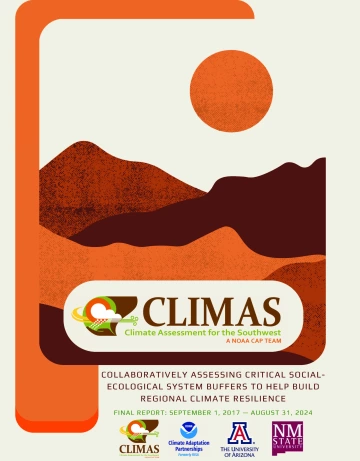Air Quality and Climate
Dust storms in the Southwest U.S. and northern Mexico continue to be a serious health and safety issue. This project aims to locate the sources of dust that have impacted people in southwestern New Mexico, northwestern Chihuahua, and west Texas. Researchers continued surveillance of dust storms and determined the latitude and longitude of each event. To better understand the characteristics of the land surface from where the dust emission occurs, researchers identified more than 2,000 locations responsible for a dust plume as seen in satellite imagery and are in the process of understanding the state-of-the-land surface at those locations. Researchers also have started work to construct a synoptic climatology of these dust storms to increase their ability to forecast these events.
Dust storms in the Southwest United States and northern Mexico continue to create serious health and safety issues. In a continued effort to locate the sources of dust, researchers continued surveillance of dust storms and determined the latitude and longitude of these storms.
Findings: Researchers completed their work designing a method to characterize dust storm events using data from the North American Regional Reanalysis model archive. Based on 60 dust storm events, they generated patterns to compare with non-dust days. While that method proved to be successful in identifying dust storms, it also identified other non-dust events. One particular variable that needs to be included in the future is soil moisture.
For more information documenting dust events that impacted New Mexico, northwestern Chihuahua, and west Texas: (http://nmborderaq.blogspot.com/)
For videos published on the New Mexico Climate Center’s YouTube channel to support outreach on climate, air quality, and projects at the New Mexico Climate Center: (https://www.youtube.com/NMClimate).


